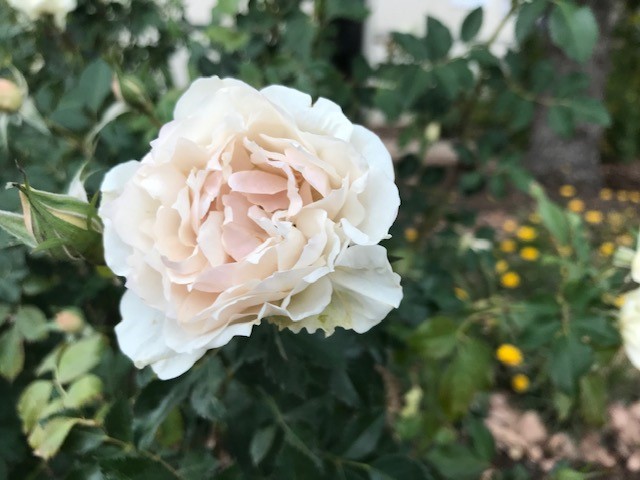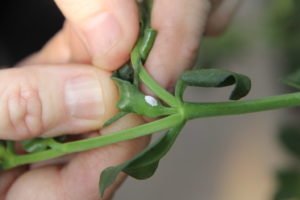March Gardening To-Dos
 The first week of March is the average last day of frost, but remain diligent and listen to the weather forecast. Warm season vegetables can start to be transplanted and roses will begin to bloom profusely this month. See below for other things that should be on your March gardening to-dos.
The first week of March is the average last day of frost, but remain diligent and listen to the weather forecast. Warm season vegetables can start to be transplanted and roses will begin to bloom profusely this month. See below for other things that should be on your March gardening to-dos.
Your March Outdoor Gardening Checklist |
|
FERTILIZE |
Apply fertilizer recommendations from your soil test to blooming shrubs, annuals, and the vegetable garden. Pull back mulch before applying, water in well, then replace mulch to help protect from freeze. Hold off on fertilizing the lawn until April. |
WATER |
You may need to irrigate this month if rains don’t arrive. Monitor new seedbeds and transplants and water them as needed. Make sure to water transplants deeply if frost is predicted. Water helps protect the roots from cold. Reconnect hoses and timers and check for leaks. Soaker hoses and drip irrigation are recommended for vegetable gardens because they direct water to the roots and avoid wetting the leaves. |
TRANSPLANT |
Add perennial flower transplants. Plant annual flower seeds like zinnias when danger of frost has passed. Hold off on warm season tubers like caladiums unless the soil has warmed up to 70°F. |
SOIL |
Apply 1/2 inch of compost to all areas, including the lawn, water in well to establish good soil contact. Work compost into the first few inches of the vegetable beds. Hold off mulching vegetable beds until the soil has warmed to 70°F. |
LAWNS |
Lay sod for warm-season turfgrasses like Zoysiagrass. Hold off with planting turgrass by seed until April. Mow the lawn if needed. Spot treat for weeds. |
DISEASES/PESTS TO LOOK FOR |
Aphids and caterpillars start to appear, and flea beetles may be eating the cole crops. Use blasts of water to control, or investigate other less toxic solutions like insecticidal soap. Reference the Grow Green FAQ sheets for guidance. Monitor new seedlings for cutworms and wrap stems with a 2-inch strip of newspaper to prevent further damage. Destroy soil grubs as you find them. Use horticultural oil to spot treat for scale, taking care to completely coat the infestations. Do not spray oil on new leaves or blossoms. Spray peach and plum trees for curculio weevils when 3/4 of the petals have fallen. You’ll need to repeat three times at two-week intervals. Read more from the Homeowners Guide to Pest of Peaches, Plums, and Pecans. |
MAINTENANCE |
Evaluate and audit your irrigation systems. Check for misaligned or broken spray heads or emitters, misaligned spray heads, improper pressure, and poor overlap. Prune spring blooming shrubs when blooms have faded. Deadhead annual flowers as needed. Train vines as they emerge from dormancy. Don’t let weeds go to seed, pull or chop before they start to flower. |
IN THE VEGETABLE GARDEN |
See the full Vegetable Garden Planting Guide (Español, 繁体中文) and Vegetable Varieties for Central Texas. Weeding and watering are critical, especially during the first 30-40 days of growth when plants are putting down roots. Transplants should be watered in their pots before transplanting and watered again after planting in the ground. Choose planting beds that provide at least six to eight hours of full sun for optimum growth and production. Strong spring winds can quickly desiccate young seedlings, so monitor water needs of new plantings. Plant seeds of peas and greens early in the month, bush and pole beans, cucumbers, summer squash and winter squash later in the month. Tomatoes, peppers and eggplants should go in the garden as transplants so that flowering and fruit set can occur before temperatures get too hot. Wrap tomato cage with row cover and place over transplants to protect them from wind and cold. Transplant herbs like oregano and thyme late in the month. Mound soil around potatoes leaving the top 6-8” of leaves exposed. Hold off on melons, okra, sweet potatoes, peppers and southern peas until the very end of the month or the first of April once the soil has warmed up to 65° F and the air temperature is between 70° and 85° F. Continue harvesting cool season crops and monitor for pests; as temperatures rise the cool season crops become stressed and attract pests. Pull up and compost cool season crops as soon as they start exhibiting stress. Plant flowers in and around the vegetable garden to attract beneficial insects. |
Your March Indoor Gardening Checklist |
|
FERTILIZE |
Slightly increase fertilization this month. If plants are putting on new growth, begin fertilizing twice monthly, or as indicated on the plant label. |
WATER |
Due to rising outdoor temps review your watering schedule and adjust accordingly. Less indoor heat usage allows soil to retain more moisture. Take care not to overwater houseplants as this leads to root rot and fungal problems. Soil may be compacted due to drier indoor temps. Its good practice to aerate the top few inches of soil to ensure proper penetration of water and nutrients to the plants roots. If it’s rainy consider capturing some rainwater to water your plants. |
HUMIDITY |
Outdoor temps may be starting to rise during this time. Monitor humidity levels and reduce use of humidifiers as necessary. Overly dry temps can attract spider mites so be sure to adjust humidity according to an individual houseplants needs. |
FOLIAGE CARE |
Dust leaves with a damp cloth using distilled water. If temps have warmed above 40° move plants closer to windows. The sun starts strengthening during this time so be careful to avoid direct afternoon sunlight as this can scorch leaves. If daytime temperatures remain above 55° consider taking houseplants outside for some fresh air and sun. Be careful not to place them in direct sun as most are native to lower light regions like tropical rainforests and jungles. |
DISEASES/PESTS TO LOOK FOR |
Humid moist environments are the perfect environment for an outbreak of pests. Many remain dormant in soil and before you know it you’re overrun. Always inspect leaves and lightly agitate the soil. Sticky traps made especially for houseplants are a great way to capture flying pests! Mealy bugs and aphids can be easily removed by spraying them away with water or wiping the leaves with a damp cloth. In the case of mealybug infestation remember to check below the soil line. You may find them hiding there and laying eggs. If so, thoroughly wash the roots of your plants and the pot itself before repotting your plant in fresh soil. Quarantine any pest affected plants to reduce the possibility of spread. |
MAINTENANCE |
As in other months, remove any dead, damaged or diseased leaves. You should start to see some new growth this month. This is also a great time to repot into a larger container or divide houseplants. If excess fertilizer accumulation is present you may want to remove soil and wash roots before repotting in fresh potting mix. |
 As a contributor to Central Texas Gardener (CTG), Daphne Richards, County Extension Agent-Horticulture, answers questions and shares knowledge on new and tried & true plants for Central Texas. Check out some of our favorites for March!
As a contributor to Central Texas Gardener (CTG), Daphne Richards, County Extension Agent-Horticulture, answers questions and shares knowledge on new and tried & true plants for Central Texas. Check out some of our favorites for March!
 Crown gall|Daphne Richards|Central Texas Gardener
Crown gall|Daphne Richards|Central Texas Gardener
 Growing tatume squash|Daphne Richards|Central Texas Gardener
Growing tatume squash|Daphne Richards|Central Texas Gardener
 Oak leaf drop|Daphne Richards|Central Texas Gardener
Oak leaf drop|Daphne Richards|Central Texas Gardener
Get Growing!
Gertrude Jekyll, garden designer and writer said, “The love of gardening is a seed that once sown never dies.” This handy reference will help you sow more gardening love and serve as a guide for what things to do in the garden each month: January, February, March, April, May, June, July, August, September, October, November, and December.

